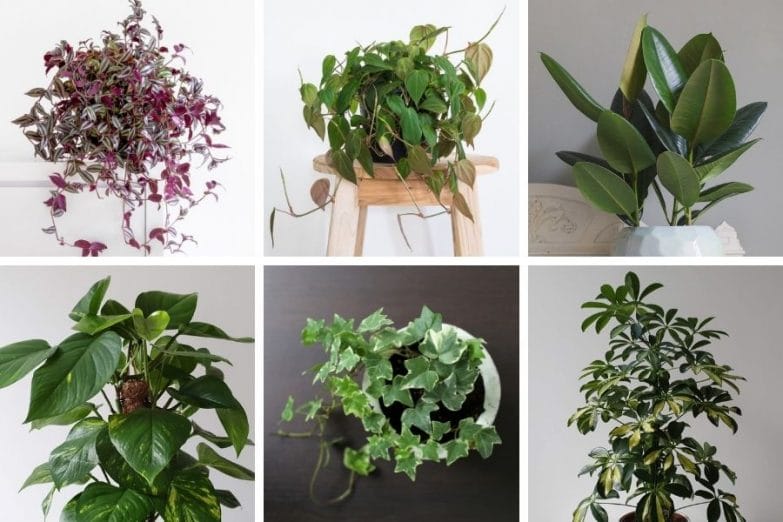There are few things nicer than having large, lush houseplants in your home, bringing peace and beauty to your indoor space. If you’re inspired to create a serene atmosphere with indoor plants, but patience is not one of your strongest virtues, then these fast-growing indoor plants are ideal for you.
Popular Fast-Growing Indoor Plants
I’ve picked 18 of my favorite fast-growing houseplants that will fill your home in no time. All of these plants are widely available, fairly easy to care for, and will reach an impressive size in very little time at all.
Pothos (Epipremnum aureum)
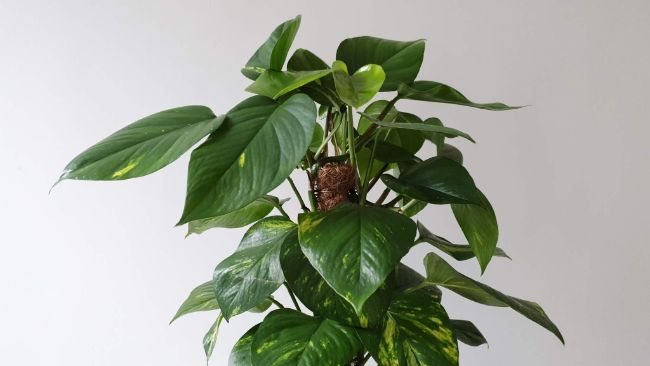
Pothos is a fantastic houseplant for people with a black thumb as it is practically indestructible. It can survive in extremely low-light conditions and is quite forgiving if you forget to water it every now and then.
It grows so fast despite all the neglect it handles that it has been nicknamed the Devil’s Ivy. Seriously, what more can you expect from an indoor plant!
Under the right conditions, Pothos can grow up to two feet in just a couple of months. I’ve written an article about how to make Pothos grow as fast as possible that will help you get this plant to an impressive size really quickly.
You can grow it in both water and soil. If you have a variegated Pothos, it will need more light compared to one with all-green leaves. This plant is a light feeder and is incredibly easy to propagate too.
Rubber Plant (Ficus elastica)
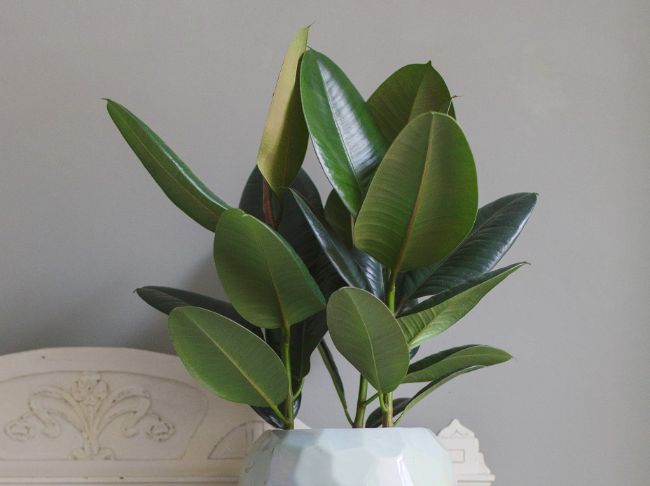
If you’re looking for a stately, tree-like indoor plant that will enhance the ambiance of your space with its larger-than-life appearance, look no further than the Ficus elastica or the rubber plant. It can grow to an impressive height indoors and keeps sprouting large waxy leaves on a regular basis.
Usually, Rubber Plants are known for their shiny dark green foliage, but some varieties can also have unique reddish-brown, or variegated leaves. The secret behind keeping this hardy plant happy is the right balance of sun and water. You can read more about caring for your Rubber Plant here.
It prefers to stay in bright, indirect light and requires moist soil during the summer season. The large leaves will get dusty over time, so remember to wipe them with a damp cloth every so often to maximize the amount of light your plant is receiving.
As for toxicity, its sap can cause mild irritation to the skin, so you should be careful when handling this plant.
Heartleaf Philodendron (Philodendron hedceraceum)
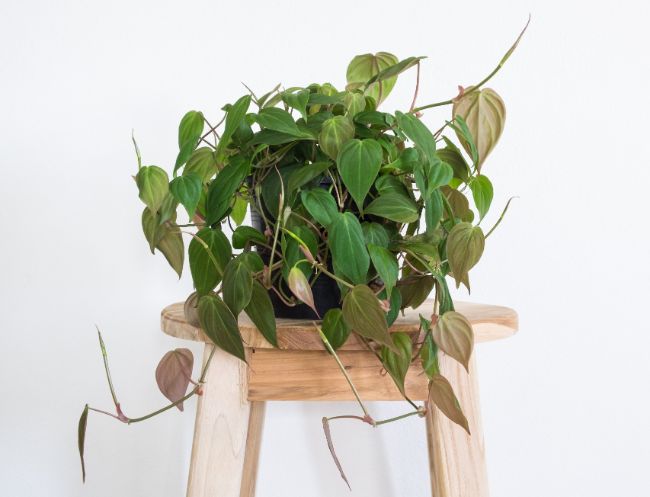
Heartleaf Philodendrons aren’t hard to love, with their stunning heart-shaped leaves, rapid growth, and easy care requirements. These fast-growing indoor plants are native to tropical America and absolutely love a warm and cozy indoor environment.
Counted among one of the most easy-to-grow houseplants, the Heartleaf Philodendron is known for its trailing vines that can grow at least 10 feet long under ideal conditions. Read more about keeping your Heartleaf Philodendron thriving here.
It requires medium indirect light but can tolerate low light fairly well for some time. You should water it only when the top 1-2 inches of the soil is dry, and ensure moderate humidity around the plant if you want it grow faster and produce larger leaves.
Wandering Jew Plant (Tradescantia zebrina)
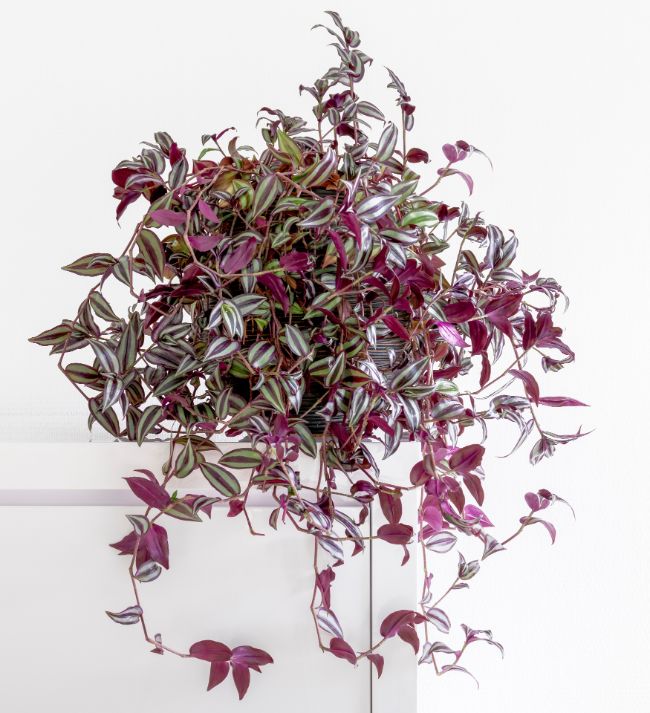
As its name suggests, the Wandering Jew plant loves to wander around of its own accord with stunning foliage that trails, spreads, or climbs. It does not even need to be watered frequently and can survive drought without missing a beat.
In fact, quite a lot of countries consider this plant an invasive species due to its speed of growth and ability to thrive in a wide variety of conditions. This makes it one of the best fast growing indoor plants you could choose, as it will flourish without needing a lot of attention.
Wandering Jew or the Tradescantia zebrina features oval-shaped colorful patterned foliage with green and purple stripes along with a silver outer lining. Some varieties also come with pink or off-white striped leaves. The underside of the foliage is a bright magenta or deep purple.
Caring for this beautiful fast-growing indoor plant is simple – it needs medium to bright indirect light to sustain its colorful looks, slightly moist soil, temperature between 55-70°F (15.5-24°C), and monthly feeding. As it grows, the plant may lose leaves near the base of the stems, so that should not be a cause for worry.
Peace Lily (Spathiphyllum Spp.)
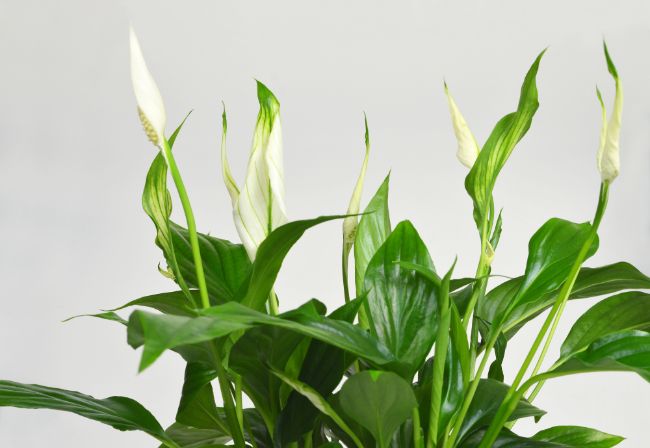
Peace Lilies are not just absolute heart-stealers, these gorgeous indoor plants are also renowned for their fast growth, adaptable nature, resilience, and ability to bloom over and over again.
Native to American tropical rainforests, these eye-catching plants can grow up to 24-40 inches in only 1-2 years. And if you care for them nicely enough (it is impossible not to, for they are such graceful beauties) you’ll get to see them bloom repeatedly for years!
Also, perhaps no other houseplant declares as dramatically as the Peace Lily that it needs a drink. It will wilt and droop to let you know it is time to water it and will perk up beautifully upon watering. But be careful not to shower too much love (read water) on this plant or you might end up killing it.
Peace Lilies are not too fussy about lighting but will bloom best and grow most strongly in bright, indirect light. They do not tolerate cold drafts well and prefer surroundings that mimic their natural habitat.
Arrowhead Plant (Syngonium podophyllum)
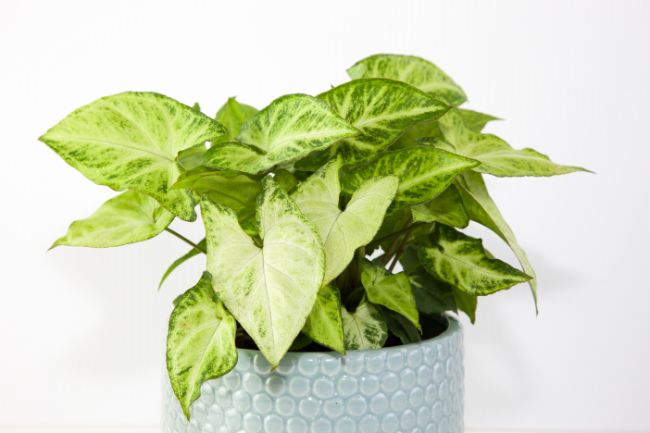
Attractive? Yes. Easy-going? Yes. Fast-growing? Yes. Easy to propagate? Yes! Now you know why the Arrowhead Plant is an absolute favorite among the indoor gardening community.
This tropical climber is known for its unique arrow-shaped foliage that may or may not be variegated. The Arrowhead Plant can be kept bushy by pruning it back, or grown into long and spectacular vines, which you can hang from a bookshelf, wall, or hanging planter.
When given proper care, this plant can grow aggressively. If you want your Arrowhead plant to look lush and healthy, you need to put in a place that gets loads of bright but filtered light and maintain a high level of humidity around it. The soil should be moist, but not soggy.
Your Arrowhead Plant will grow much more quickly in spring and summer, but you can improve winter growth by using a grow light to accelerate growth further.
Fiddle Leaf Fig (Ficus lyrata)
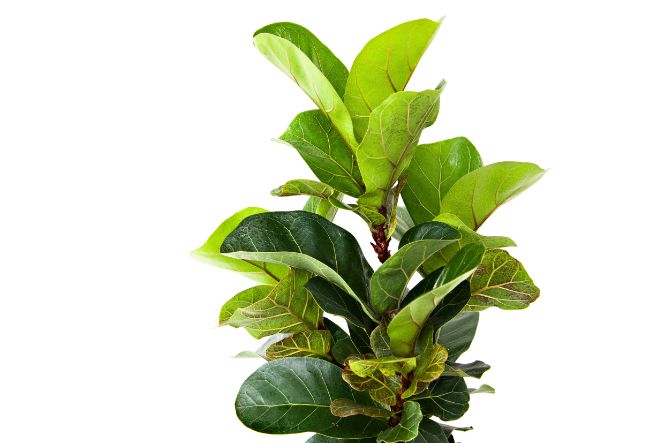
Fiddle Leaf Fig is not the easiest houseplant to adopt given its finicky nature, but its spectacular looks more than make up for it! This is why it enjoys such popularity among gardening enthusiasts and is often spotted on Instagram posts and the front page of home décor magazines.
I know I just mentioned this – but let me say this again – Fiddle Leaf Figs are finicky creatures and very particular about what they will tolerate. These plants hate hot/cold drafts, soggy soil, dry soil, too much sun exposure, low-lighting, lack of humidity, and broccoli. Okay, maybe it’s just me who hates the last one.
Long story short, if you want to your Fiddle Leaf Fig to grow nice and tall, you’ll have to give it proper care and attention. Under ideal conditions, Fiddle Leaf Figs will grow right up to the ceiling, and you may have to prune it back to prevent it taking over your house.
If you are looking for fast-growing indoor plants and are up for a challenge, there are few things more rewarding than seeing perfect new leaves emerge from your Fiddle Leafe Fig.
Chinese Money Plant (Pilea peperomioides)
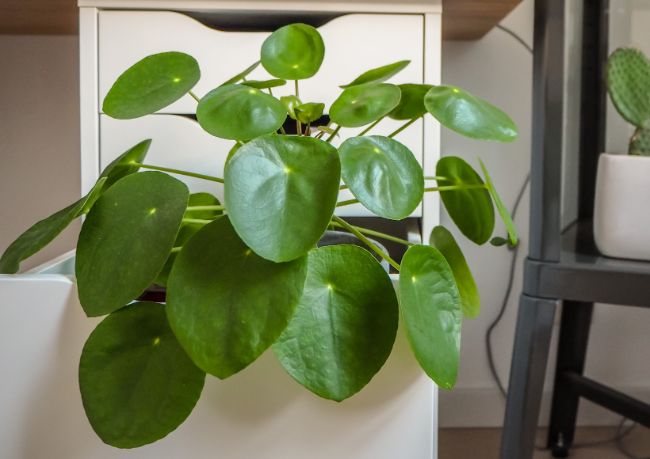
The Chinese Money Plant has a host of interesting nicknames like the Pancake Plant or the UFO Plant, thanks to its adorable flat, round leaves. No matter what you decide to call it, this is an excellent fast-growing indoor plant that can turn any corner of your home lively with its sheer presence.
Native to southern China, this plant was, till a few years ago, not so readily available in plant shops and nurseries and was mostly passed on between friends because it is incredibly easy to propagate via cuttings. This is why it is also known as the ‘Pass-it-on Plant’. Read my article on propagating Pilea peperomioides here.
To keep it happy, all you need to do is give it a brightly lit area to live and water it when you feel the top layer of the soil has dried out completely. And remember, monthly feeding in summer months will keep your Chinese money plant truly ecstatic.
Radiator Plant (Peperomia obtusifolia)
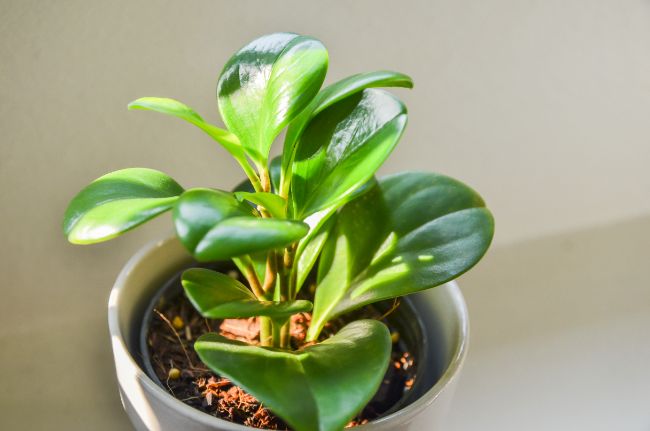
Fun fact: the Radiator Plant is a member of the Piperaceae family or the pepper family and is a distant cousin of the black pepper that we use for cooking.
This stunning little houseplant is super easy to grow and its leathery, cupped foliage is similar to the Rubber plant – so it is sometimes referred to as the Baby Rubber Plant. Mostly, this plant will have deep, green leaves but some cultivars can have cream or golden streaks on their foliage.
Although Peperomia obtusifolia are fast-growing indoor plants, they rarely get larger than one foot tall or wide. To keep it over the moon, give it a rainforest-like environment with lots of bright indirect light, moist soil, and sufficient ambient humidity. Fertilizing should be done monthly, but only in spring and summer with a balanced fertilizer.
Corn Plant (Dracaena fragrans)
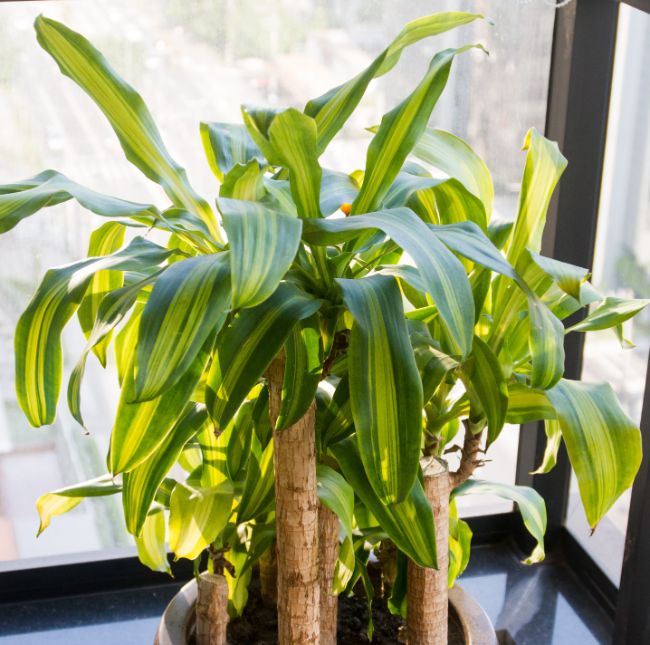
No matter what kind of vibes your home exudes – rustic or contemporary – the Corn Plant works exceedingly well with all kinds of home décor.
This African tropical stunner features a thick woody stem with clusters of long green leaves on the top. There are cultivars with different lime-green or yellowish stripes running down the center of each leaf.
Because it looks somewhat like a palm tree, the Corn Plant is also sometimes called the “False Palm”. These fast-growing indoor plants can easily reach heights of 6 feet tall. This is another of those “I thrive on neglect” kind of houseplants that can handle its fair share of abuse from casual gardeners or people with a black thumb.
But if you truly want it to grow quickly, it does best with bright, indirect light, well-draining and moist soil, warm and humid surroundings, and a monthly feeding during spring and summer.
Umbrella Plant (Schefflera arboricola)
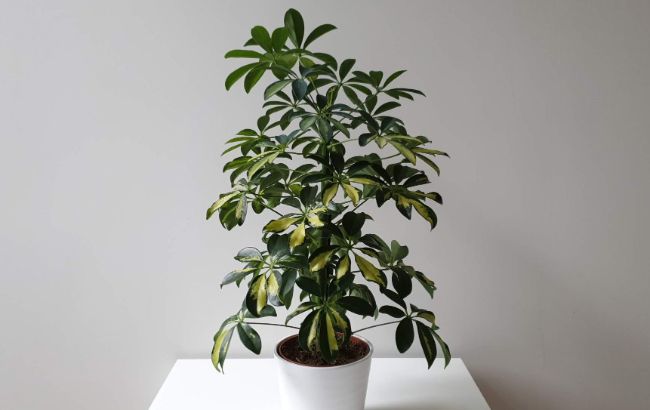
The Umbrella Plant might not be the most sought after indoor plant these days, but that does not make it any less attractive. It features clusters of oval-shaped, shiny leaves that elegantly droop from a central stalk, resembling an umbrella (hence, the name).
This one is a robust and hardy plant that will grow aggressively under the right conditions. Give it loads of indirect light, warmth and humidity to watch it flourish and prosper.
It can tolerate low-light well but that might cause it to become leggy. And in the absence of proper humidity, it can attract pests like spider mites. It is best to prune these fast-growing indoor plants on a regular basis to maintain bushy growth. This will lead to a more impressive plant in time, but will of course increase the time it takes for it to get really large.
Please note that the sap of the Umbrella Plant is considered toxic for pets and will cause a burning sensation in humans if ingested.
Aloe Vera
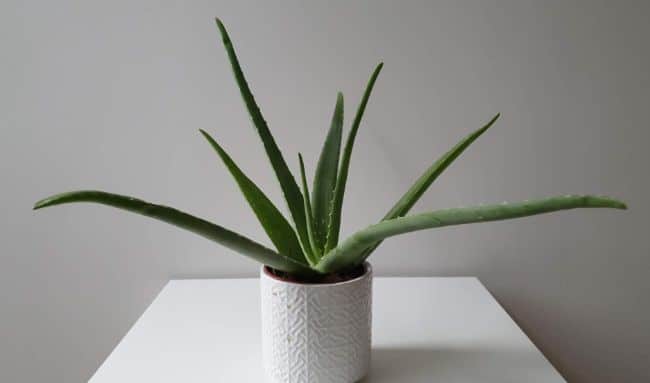
Aloe Vera has been grown by people for centuries, primarily due to its therapeutic properties. Aloe Vera gel is commonly used to treat burns and cuts and is used as an ingredient in many cosmetics. It is a fast-growing succulent that stores water in its fleshy leaves. The leaves form a dense rosette to give it a striking appearance.
Aloe Vera is a great option for people who want to enjoy the beauty of houseplants but are too busy to care for them. All it needs is a spot that gets lots of bright, indirect light and infrequent watering to flourish.
Since Aloe Vera is a succulent, it does not grow as fast as other houseplants on this list, but still, under ideal conditions, you can expect it to mature fully from a tiny baby to a full-grown plant with 8-10 inch long leaves in about two to three years.
Spider Plant (Chlorophytum comosum)
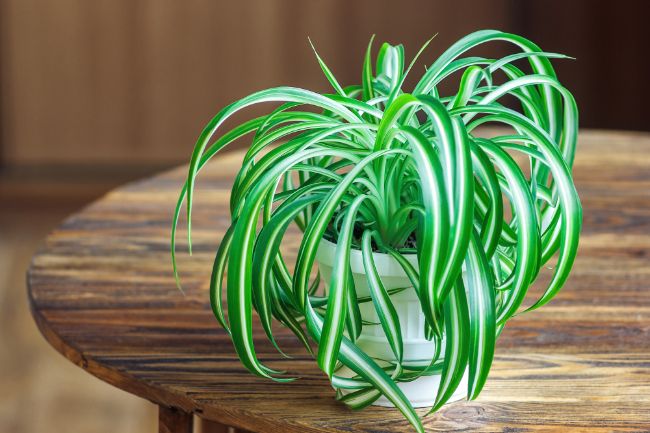
The Spider Plant (Chlorophytum comosum), with its long, thin, and beautifully arched foliage, can often be seen elegantly dangling from hanging pots in cafes, restaurants, and homes. Its striking appearance and its easy-going nature make the Spider Plant a hot favorite among gardening beginners.
While caring for your Spider Plant, you just need to remember the mantra – ‘Less is more’. It likes moist soil, but it shouldn’t be too soggy. It likes well-lit places, but direct sun is likely to burn its delicate leaves.
Also, these fast-growing indoor plants are also super easy to propagate. They produce little babies (pups!) that can be planted in containers while still attached to the mother plant until they develop roots of their own.
Boston Fern (Nephrolepsis exaltata)
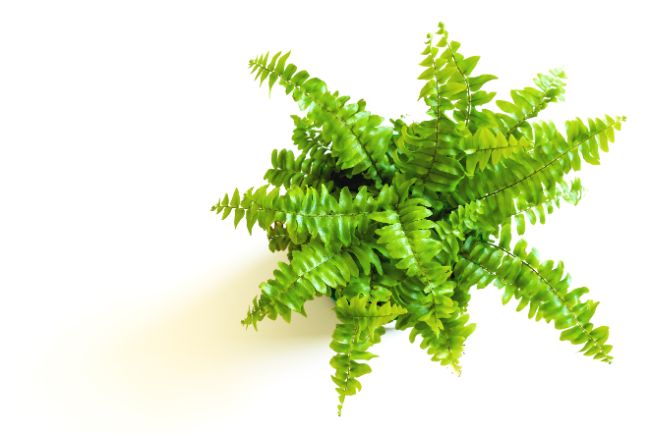
If you’re looking for a lush, vibrant indoor plant that you can place anywhere from a windowsill of a bathroom to pedestals or even in a hanging basket, the Boston Fern is a great option.
It is much loved for its resilient and tough nature – it might look as if it is impossible to revive it and yet with a little care and attention, it will bounce back to its former glory.
Boston Ferns get their gracefulness from their long fronds that arch elegantly and are bedecked with small green leaves. These plants grow quickly during spring and summer with the right amount of light and moisture. Its fronds can grow up to three feet in length, and the sight of them falling over the sides of the container is enough to make your heart sing.
Please remember that since ferns grow in rainforests across the globe, they need high humidity and hate being exposed to cold drafts.
Areca Palm (Dypsis lutescens)
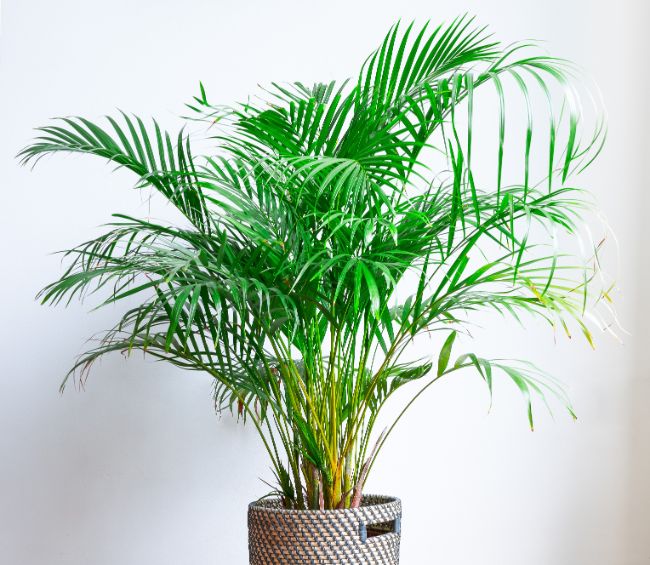
There is perhaps no other plant that can bring those warm, tropical vibes to a space like the Areca Palm. A native of Madagascar, this plant can grow up to an impressive height of three meters (ten feet) indoors – and it grows pretty fast during spring and summer.
Areca Palms require tons of bright filtered light and should ideally be placed near a south or west-facing window. A little morning sun is also good for the plant, but too much direct sunlight will burn its leaves.
As an indoor plant, the Areca Palm loves a well-draining potting mix and is sensitive to overwatering. It thrives in normal humid indoor conditions and temperatures ranging from 65-80°F (18-27°C). Read my guide to Areca Palm care for more info and care tips.
The best part – this plant is considered non-toxic for both cats and dogs.
Autograph Tree (Clusia rosea)
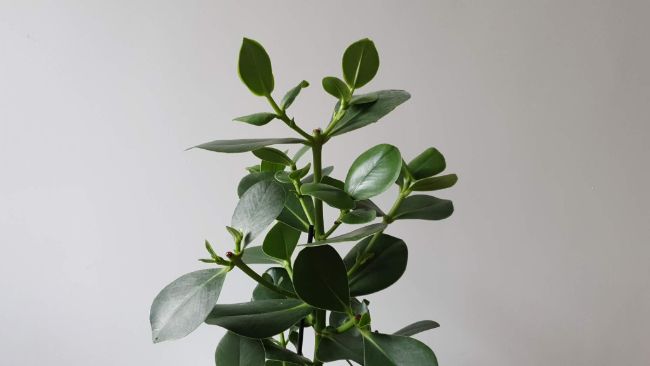
The Autograph Tree gets its unusual name from its thick, leathery dark green leaves that are so stiff that you can carve your name into them!
It is a stunning ornamental indoor plant that grows remarkably fast – in fact, in the wild it is considered an invasive species due to its tendency of growing on top of other plants. And it spreads out quite wide as it grows, so you’ll need to prune it annually, preferably in spring.
For keeping your Autograph Tree happy and content, you need to give it a constant supply of bright, indirect light, warmth, and humidity. It can survive short periods of drought but hates waterlogged soil. And fertilizing it three times in a year (spring, summer, and autumn) is enough.
Read my guide to growing an Autograph Tree (Clusia rosea) for more tips to keep yours healthy.
English Ivy (Hedera helix)
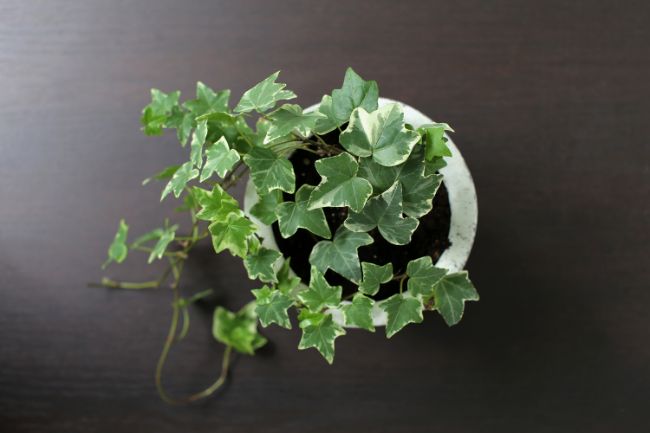
You’ve seen this gorgeous beauty trailing across lawns or climbing walls with abandon – the English Ivy is notorious for the speed at which it spreads.
As an indoor plant, this evergreen perennial can be encouraged as a climber to lend a green decorative accent to your space. It also looks spectacular cascading down from a hanging container.
These fast-growing indoor plants absolutely love the indoors and need medium, indirect light to thrive, although they do well in bright light too. English Ivy is not very demanding when it comes to caring for it – evenly moist soil, medium humidity and occasional pruning will keep it super happy.
And since it is native to cooler European climates, it does beautifully in spaces with temperature ranging from 50-70°F (10-21°C).
One thing English Ivy will not tolerate is overwatering. Excess water will cause root rot, preventing the roots from delivering nutrients to the plant, causing the leaves to turn brown and fall off.
Snake Plant (Dracaena trifasciata)
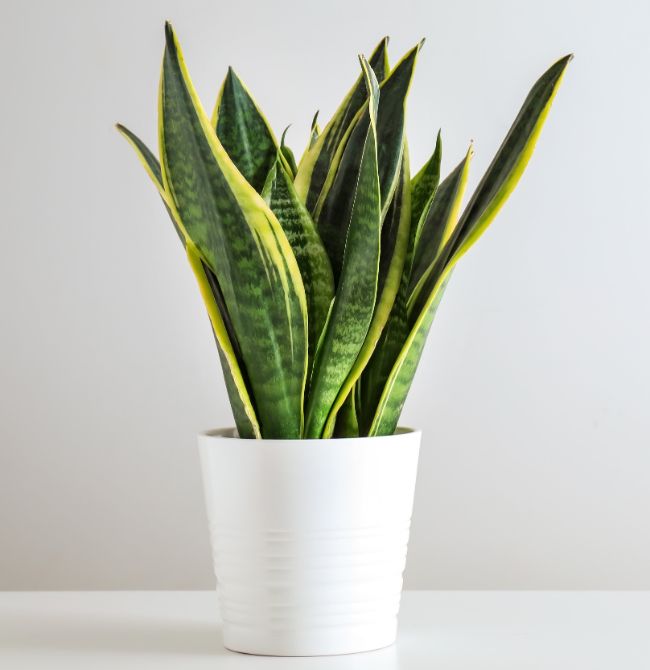
This is the plant to go for if you want to add a touch of greenery to your space but want that greenery to survive nicely when you head off on vacation.
The Snake Plant (Dracaena trifasciata) is hardy, forgiving, and will put up with almost anything – except maybe too much water and cold. It is, therefore, a perfect plant for beginners.
The Snake Plant is actually a succulent that stores water in its long, spiky leaves. It has low water requirements, so water it only when the top two inches of the soil completely dry out.
It is best to choose a terracotta pot for your Snake Plant and go for well-draining potting mix which allows excess water to seep out as it is prone to root-rot.
These fast-growing indoor plants spread via underground stems called rhizomes. When exposed to strong indirect light, it will grow much faster.
How To Make Indoor Plants Grow Faster?
If you really want to supercharge the rate of growth of your houseplants, there are a few simple things you can do. Here are my top tips;
- Optimize Lighting – Houseplants grow quicker when given optimal lighting, and their growth can virtually stop when lighting is poor. Move your houseplants to brighter locations in your home, but don’t place sensitive houseplants in direct sunlight, where their leaves can scorch.
- Regular, Cautious Fertilizing – Houseplants need a steady supply of essential nutrients, including nitrogen, potassium, phosphorus, and a number of trace elements. Nutrient deficiency will cause growth to be much slower, so using a dilute fertilizer solution every 1-2 months for most houseplants will help greatly. Note – Too much fertilizer is even worse than too little, so don’t be tempted to overdo it.
- Grow Lights – During autumn and winter, natural lighting is often insufficient for your houseplants to continue growing. Using a simple grow light for a few hours per day will help your houseplants to continue growing all year round.
- Temperature – Houseplants will grow quicker in the middle to the upper end of their preferred temperature range. Use a thermometer to monitor the temperature around your houseplants, and keep them nice and cozy!
- Watering – Consistent watering will prevent your houseplants from experiencing the stress from over- or under-watering. Any source of stress can stunt growth and damage your plant, reducing its growth rate. Try to check whether your plants need water every few days, and only water when they need it, rather than on a schedule.
- Repot – A plant that is outgrowing its pot will grow slower, or even stop growing altogether. When you see roots starting to grow out of the drainage holes, or if they are growing tightly around the inside wall of the pot, its time to repot. Only increase the pot size by 1-2 inches at a time, as overpotting can cause a lot of issues.

